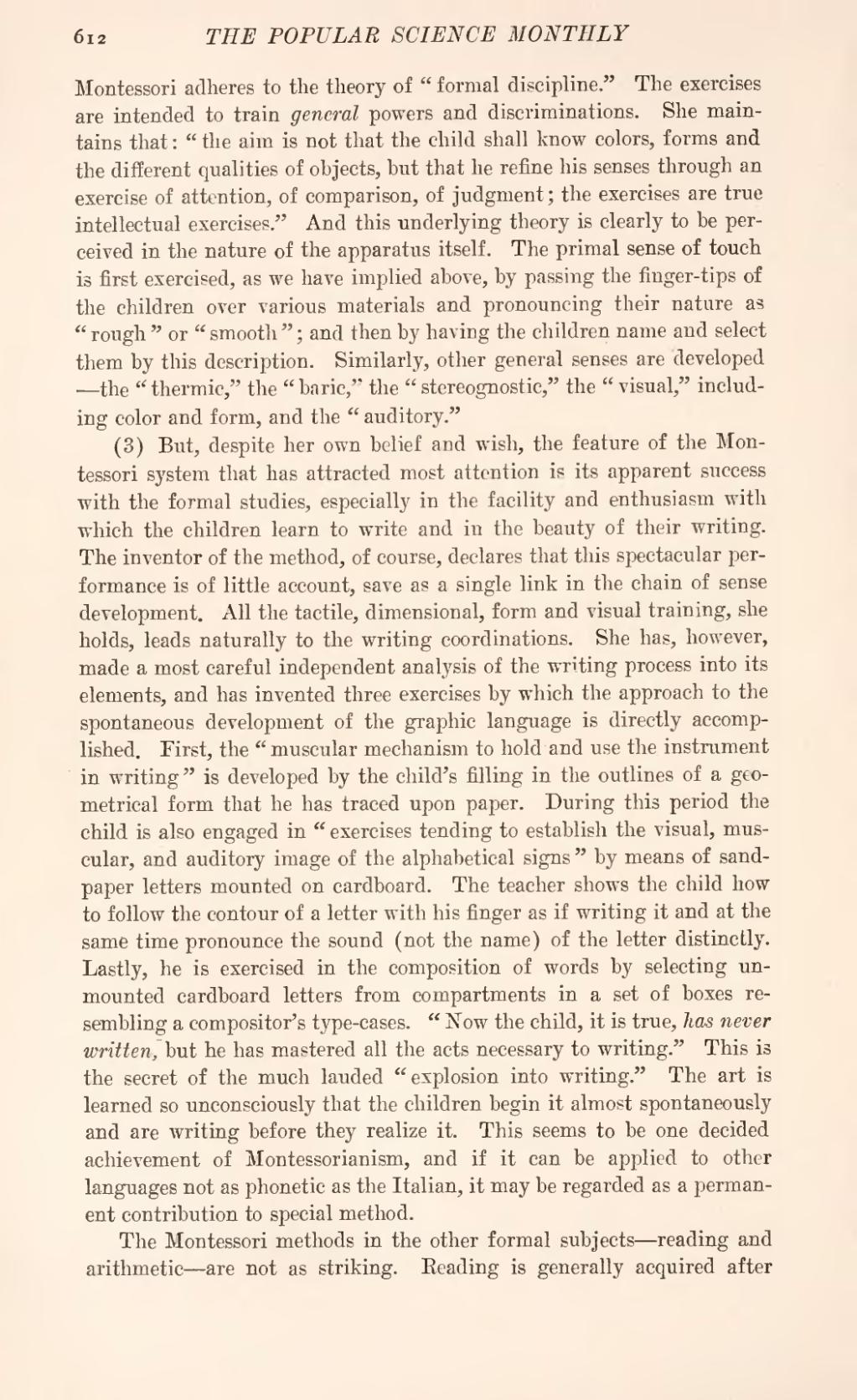Montessori adheres to the theory of "formal discipline." The exercises are intended to train general powers and discriminations. She maintains that: "the aim is not that the child shall know colors, forms and the different qualities of objects, but that he refine his senses through an exercise of attention, of comparison, of judgment; the exercises are true intellectual exercises." And this underlying theory is clearly to be perceived in the nature of the apparatus itself. The primal sense of touch is first exercised, as we have implied above, by passing the finger-tips of the children over various materials and pronouncing their nature as "rough" or "smooth"; and then by having the children name and select them by this description. Similarly, other general senses are developed—the "thermic," the "baric," the "stereognostic," the "visual," including color and form, and the "auditory."
(3) But, despite her own belief and wish, the feature of the Montessori system that has attracted most attention is its apparent success with the formal studies, especially in the facility and enthusiasm with which the children learn to write and in the beauty of their writing. The inventor of the method, of course, declares that this spectacular performance is of little account, save as a single link in the chain of sense development. All the tactile, dimensional, form and visual training, she holds, leads naturally to the writing coordinations. She has, however, made a most careful independent analysis of the writing process into its elements, and has invented three exercises by which the approach to the spontaneous development of the graphic language is directly accomplished. First, the "muscular mechanism to hold and use the instrument in writing" is developed by the child's filling in the outlines of a geometrical form that he has traced upon paper. During this period the child is also engaged in "exercises tending to establish the visual, muscular, and auditory image of the alphabetical signs "by means of sandpaper letters mounted on cardboard. The teacher shows the child how to follow the contour of a letter with his finger as if writing it and at the same time pronounce the sound (not the name) of the letter distinctly. Lastly, he is exercised in the composition of words by selecting unmounted cardboard letters from compartments in a set of boxes resembling a compositor's type-cases. "Now the child, it is true, has never written, but he has mastered all the acts necessary to writing." This is the secret of the much lauded "explosion into writing." The art is learned so unconsciously that the children begin it almost spontaneously and are writing before they realize it. This seems to be one decided achievement of Montessorianism, and if it can be applied to other languages not as phonetic as the Italian, it may be regarded as a permanent contribution to special method.
The Montessori methods in the other formal subjects—reading and arithmetic—are not as striking. Reading is generally acquired after
